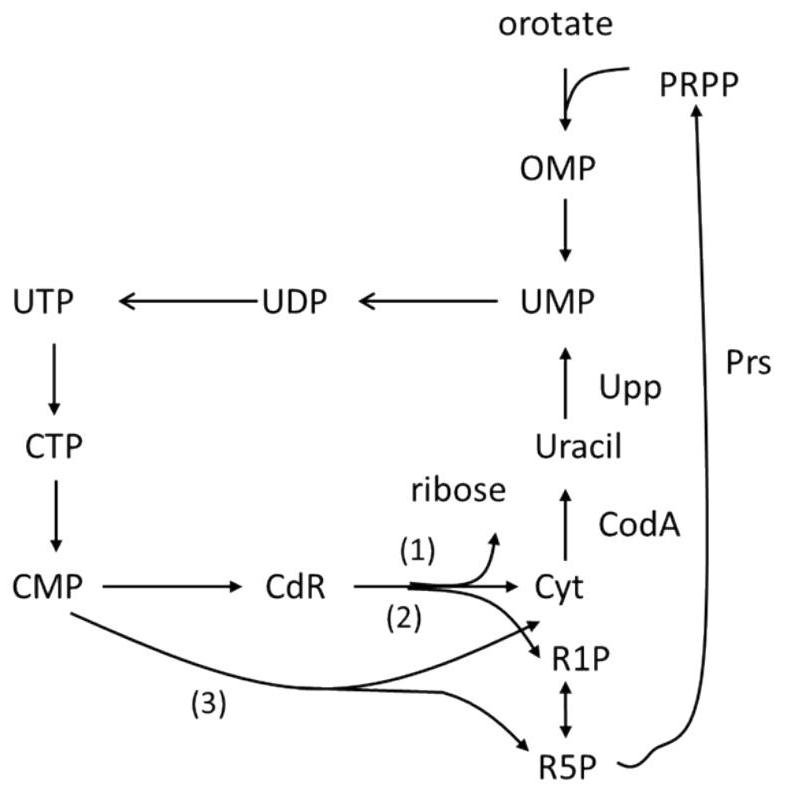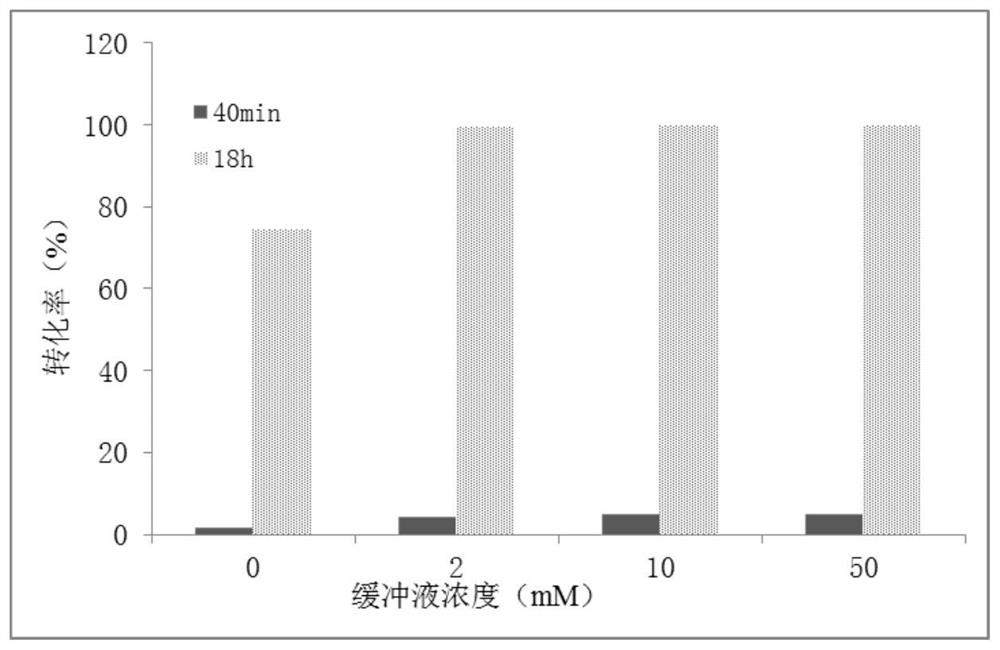Recombinant microorganism for producing cytosine and method for producing cytosine
A technology for recombining microorganisms and cytosine, which is applied in the biological field and can solve problems such as the lack of industrial production by microbial methods
- Summary
- Abstract
- Description
- Claims
- Application Information
AI Technical Summary
Problems solved by technology
Method used
Image
Examples
Embodiment 1
[0035] Example 1 The method for gene knockout in Escherichia coli
[0036] The present invention adopts Datsenko's method to carry out gene knockout in Escherichia coli (Datsenko 2000), and see Baba 2006 for the corresponding gene knockout primers.
Embodiment 2
[0037] Embodiment 2 shaking flask fermentation verifies the method for recombinant bacterial strain
[0038] Verification of the fermentation medium for recombinant strains to produce cytosine in shake flask fermentation, specifically 100ml of YC solution per liter of medium, 200ml of 5 times salt solution, 1ml of TM2 solution, 10mg of ferric citrate, 120mg of anhydrous magnesium sulfate, chlorine Calcium 111mg, thiamine 1ug, constant volume with deionized water, 5 times of the salt solution contains 30g of disodium hydrogen phosphate, 15g of potassium dihydrogen phosphate, 2.5g of sodium chloride, 5.0g of ammonium chloride per liter , constant volume with ion water; each liter of TM2 solution contains 2.0g of zinc chloride tetrahydrate, 2.0g of calcium chloride hexahydrate, 2.0g of sodium molybdate dihydrate, 1.9g of copper sulfate pentahydrate, 0.5g of boric acid, 100ml of hydrochloric acid . The YC solution in the fermentation medium is 2g of glycerol, 0.6g of peptone, 0.2...
Embodiment 3
[0040] Embodiment 3HPLC measures cytidine and cytosine in fermented liquid
[0041] Draw 1ml of fermentation broth into a 2ml centrifuge tube, heat at 100°C for 5 minutes, cool to room temperature, dilute to a certain multiple, centrifuge through a 0.22μm filter membrane, and detect with high performance liquid chromatography (HPLC). The parameters of HPLC are as follows: Agilent SBC18 4.6*150mm 5μm, the mobile phase is methanol and 10mM PBS (pH4.0), the proportion of mobile phase is 0.01-2.80 minutes, the proportion of methanol is 2%, 2.80-3.50 minutes, the proportion of methanol is increased from 2% to 10%, 3.50-3.60 minutes The proportion of methanol is reduced from 10% to 2%, and the proportion of methanol is 2% in 3.60-8.5 minutes. It is detected by an ultraviolet detector and the detection wavelength is 260nm; the flow rate of the initial mobile phase is 1.0mL / min, and the sample volume of the fermentation broth is 5 μL. The column temperature is 30°C.
PUM
 Login to View More
Login to View More Abstract
Description
Claims
Application Information
 Login to View More
Login to View More - R&D
- Intellectual Property
- Life Sciences
- Materials
- Tech Scout
- Unparalleled Data Quality
- Higher Quality Content
- 60% Fewer Hallucinations
Browse by: Latest US Patents, China's latest patents, Technical Efficacy Thesaurus, Application Domain, Technology Topic, Popular Technical Reports.
© 2025 PatSnap. All rights reserved.Legal|Privacy policy|Modern Slavery Act Transparency Statement|Sitemap|About US| Contact US: help@patsnap.com



